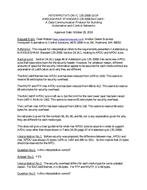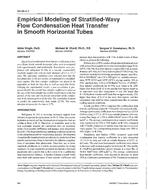Whole-building energy simulation programs model energy use in buildings by analyzing the thermal behavior of the building shell; internal gains from lighting, equipment, and occupants; and performance of mechanical systems used to maintain comfort in conditioned zones and to provide other utilities such as service hot water. Validation of building energy simulation programs consists of a combination of empirical validation, analytical verification, and comparative analysis techniques (Judkoff 1988). An analytical verification and comparative diagnostic procedure was developed to test the ability of whole-building simulation programs to model the performance of unitary space-cooling equipment that is typically modeled using manufacturer design data presented as empirically derived performance maps. Field trials of the method were conducted by researchers from nations participating in the International Energy Agency (IEA) Solar Heating and Cooling (SHC) Programme Task 22, using a number of detailed hourly simulation programs from Europe and the United States. Analytical solutions were also developed for the test cases.
Units: SI
Citation: Symposium, ASHRAE Transactions, vol. 108, pt. 2
Product Details
- Published:
- 2002
- Number of Pages:
- 11
- File Size:
- 1 file , 850 KB
- Product Code(s):
- D-8873


